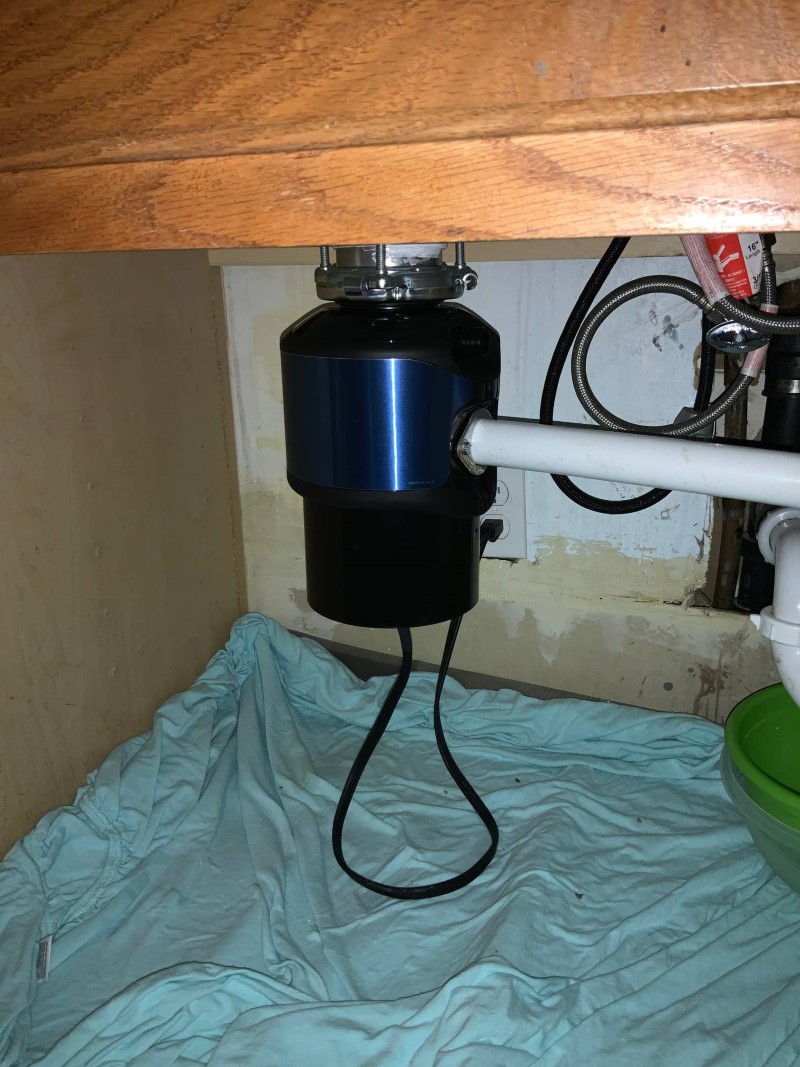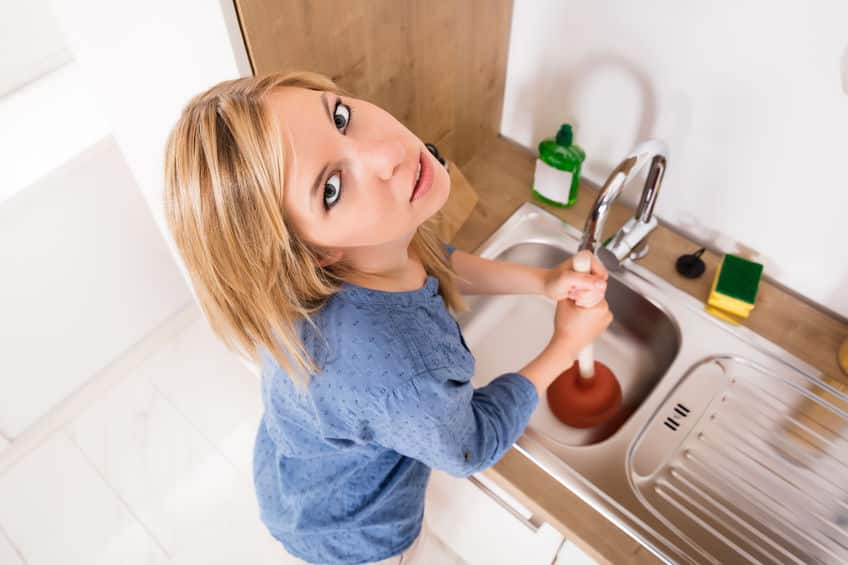The publisher is making a few great points on the subject of Garbage Disposal Leaking From Bottom as a whole in this article which follows.

Waste disposal unit are vital cooking area appliances that aid in getting rid of food waste successfully. However, a leaking waste disposal unit can be a frustrating and messy issue to take care of. Fortunately, several leakages can be repaired quickly with a couple of easy steps. In this short article, we will discuss how to fix a dripping waste disposal unit successfully.
Introduction
Garbage disposals are mounted under kitchen area sinks and are developed to shred food waste right into smaller items, allowing it to pass through the pipes system quickly. While these devices are normally trustworthy, leaks can happen in time as a result of wear and tear, loosened links, or damage to the device.
Common Root Causes Of Leakages in Trash Disposals
Worn Seals and Gaskets
Seals and gaskets play a critical role in stopping water from dripping out of the waste disposal unit. Over time, these elements can weaken, resulting in leakages around the disposal unit.
Loose Connections
The connections in between the waste disposal unit and the plumbing system can become loosened over time, causing water to leak out during operation.
Cracks or Holes in the Disposal System
Physical damages to the waste disposal unit, such as fractures or openings in the housing, can also result in leaks.
Identifying the Source of the Leak
Before attempting to fix a dripping waste disposal unit, it is essential to identify the source of the leak. This can normally be done with visual evaluation or by carrying out simple examinations.
Visual Evaluation
Inspect the waste disposal unit unit meticulously for any kind of indicators of water leak. Pay close attention to areas around seals, gaskets, and connection points.
Testing for Leaks
One method to examine for leakages is by running water via the disposal unit and checking for any kind of visible indications of leakage.
Devices and Products Needed for Taking Care Of a Leaking Waste Disposal Unit
Prior to starting the repair process, collect the essential devices and materials, including a screwdriver, adjustable wrench, plumber's putty, substitute seals or gaskets, and epoxy or patching product for repairing cracks or openings.
Step-by-Step Guide to Fixing a Dripping Garbage Disposal
Turn Off the Power
Prior to attempting any kind of repair work, ensure that the power to the waste disposal unit unit is shut off to prevent the danger of electrical shock.
Locate the Leakage
Recognize the exact place of the leakage and determine the reason.
Tighten up Links
Use a wrench to tighten any type of loose links in between the disposal device and the pipes system.
Replace Seals or Gaskets
If the leak is due to worn seals or gaskets, remove the old elements and replace them with brand-new ones.
Patching Cracks or Openings
For splits or openings in the disposal device, usage epoxy or an appropriate patching material to seal the damaged location.
Testing the Waste Disposal Unit After Repair Work
Once the repair work is complete, test the waste disposal unit by running water with it to make sure that the leak has actually been settled.
Preventive Maintenance Tips to Prevent Future Leakages
To avoid future leakages, it is important to do regular upkeep on your garbage disposal. This includes maintaining it tidy, avoiding putting non-food things or hard objects down the disposal, and regularly looking for leaks or other problems.
Conclusion
To conclude, taking care of a dripping waste disposal unit is a reasonably simple procedure that can be completed with standard devices and materials. By adhering to the actions outlined in this short article and practicing preventive maintenance, you can keep your garbage disposal in good working problem and avoid costly repair work in the future.
What to Do About a Leaking Garbage Disposal
A leaking garbage disposal often goes unnoticed until you confront a sopping cabinet, a foul-smelling puddle, or an audible drip-drip-drip from the unit. The fix can be frustrating, too, because the leak can stem from a number of components in the system. Fortunately, with a little sleuthing, you can zero in on the leak and—depending on the exact location—stop the icky oozing and repair the component that caused it. Worst case scenario, if it turns out that the garbage disposal must be replaced, installing a new one is a reasonable do-it-yourself task for those with basic plumbing skills. Read on to keep the cash you’d otherwise hand over to a pro.
Prepare to find the leak
Prior to testing the garbage disposal for leaks, unplug it at the wall outlet and turn off the power from the breaker box to prevent electrical shock. Then insert a watertight sink stopper into your sink drain and wipe the unit dry with a clean cloth. In any handy container, mix a few drops of food coloring into a few cups of water, and pour the dyed water onto the sink stopper to help you locate the leak.
Investigate the source
- the top, where the disposal meets the sink drain
- the side, where the dishwasher hose or main drain pipe connects to the disposal
- or the bottom of the unit
Inspect each of these locations while gliding a light-colored rag over the unit; the dyed water will readily show on the rag and reveal the location of the leak. If a leak isn’t immediately apparent, remove the sink stopper and pour a few more cups of dyed water down the sink drain, then check for leaks again. Leaks near the top of the unit are more likely to show themselves while the sink is plugged, while side and bottom leaks are more noticeable while the sink is unplugged.
The metal sink flange that sits directly inside the sink drain is typically sealed around the top with plumber’s putty (a clay-like sealant) and then secured from under the sink with bolts. If the plumber’s putty deteriorates, or the bolts loosen, the flange can no longer form a watertight seal between the sink drain and the disposal—which could cause a leak at the top of the unit.
To reseal the leaky flange, you must first detach the garbage disposal. Start by loosening the screws securing the main drain pipe to the disposal, then loosen the screws in the metal clamp securing the dishwasher hose to the disposal and detach the drain pipe and dishwasher hose from the disposal. Loosen the screws in the mounting ring that connects the disposal to the metal mounting assembly beneath the sink, then pull down the disposal and carefully set it on a clean, dry surface. Loosen the bolts in the mounting assembly with a wrench, then pull down the mounting assembly and set it near the disposal.

As a serious person who reads about How to fix a pretty consistent leak from my garbage disposal, I assumed sharing that excerpt was essential. For those who enjoyed our post kindly remember to share it. I appreciate reading our article about The Handy Guide To Fixing Your Garbage Disposal Leaking.
Book Service Now
Comments on “Step-by-Step Instructions for Repairing a Leaky Waste Disposal”